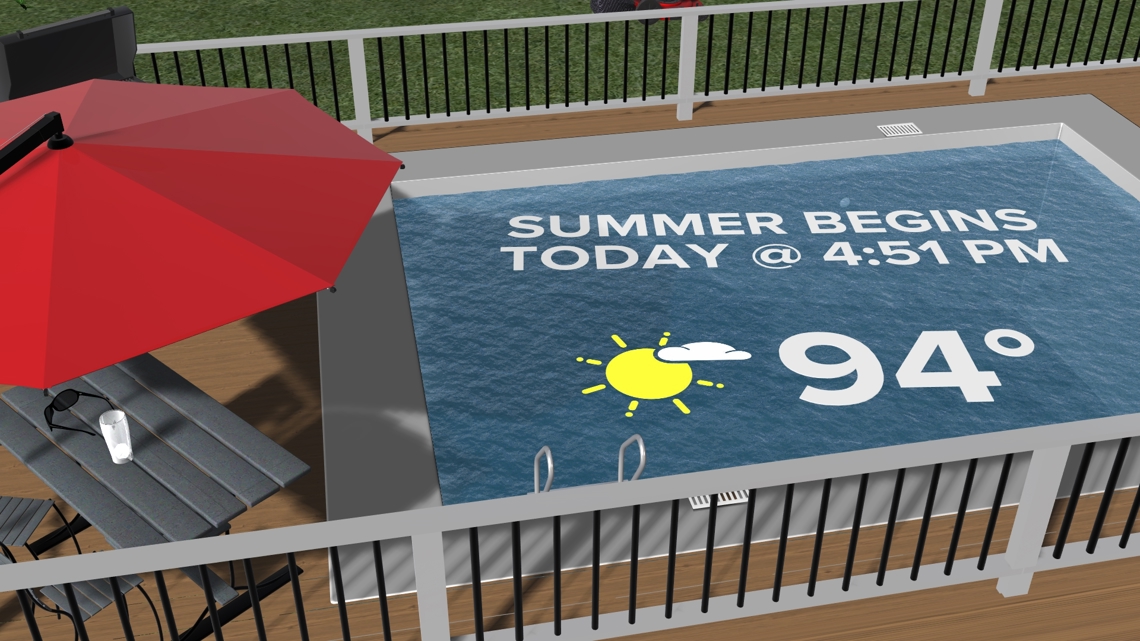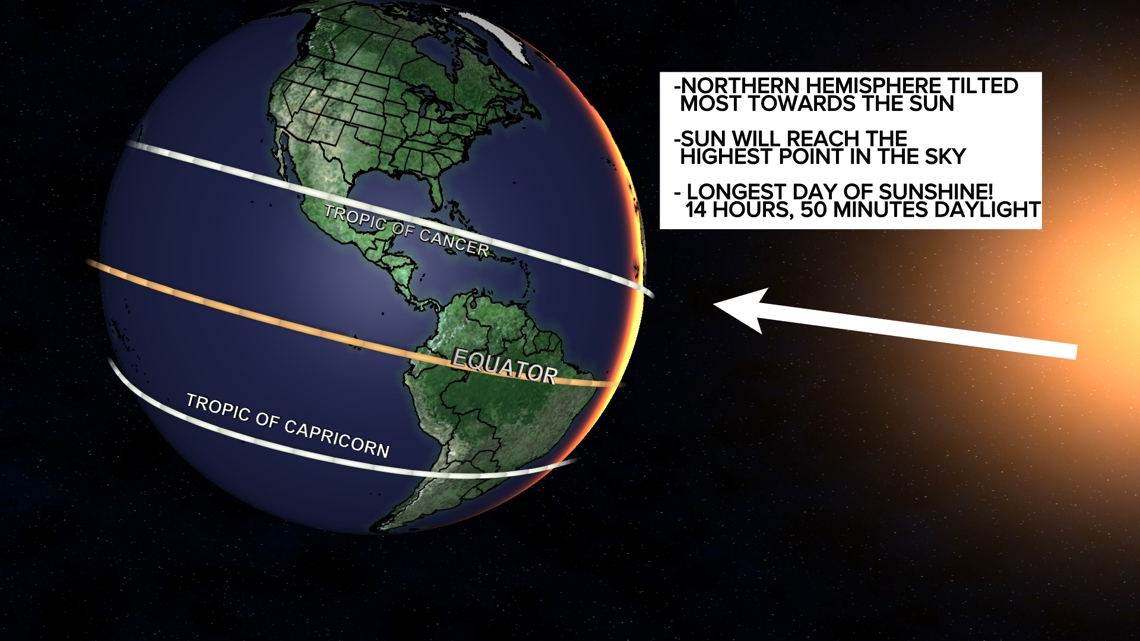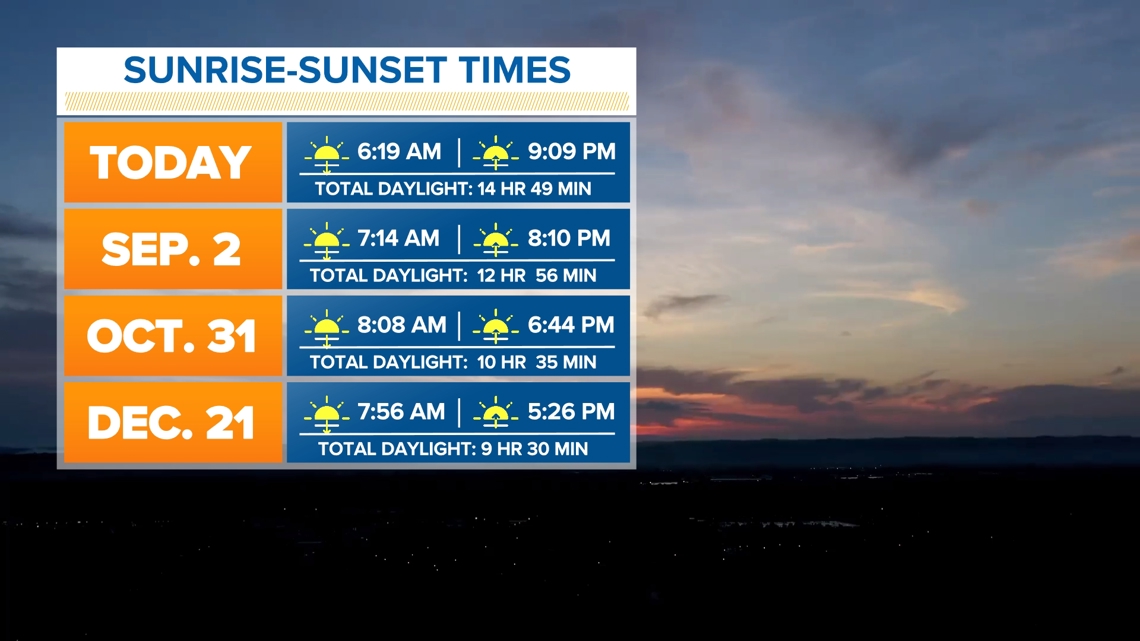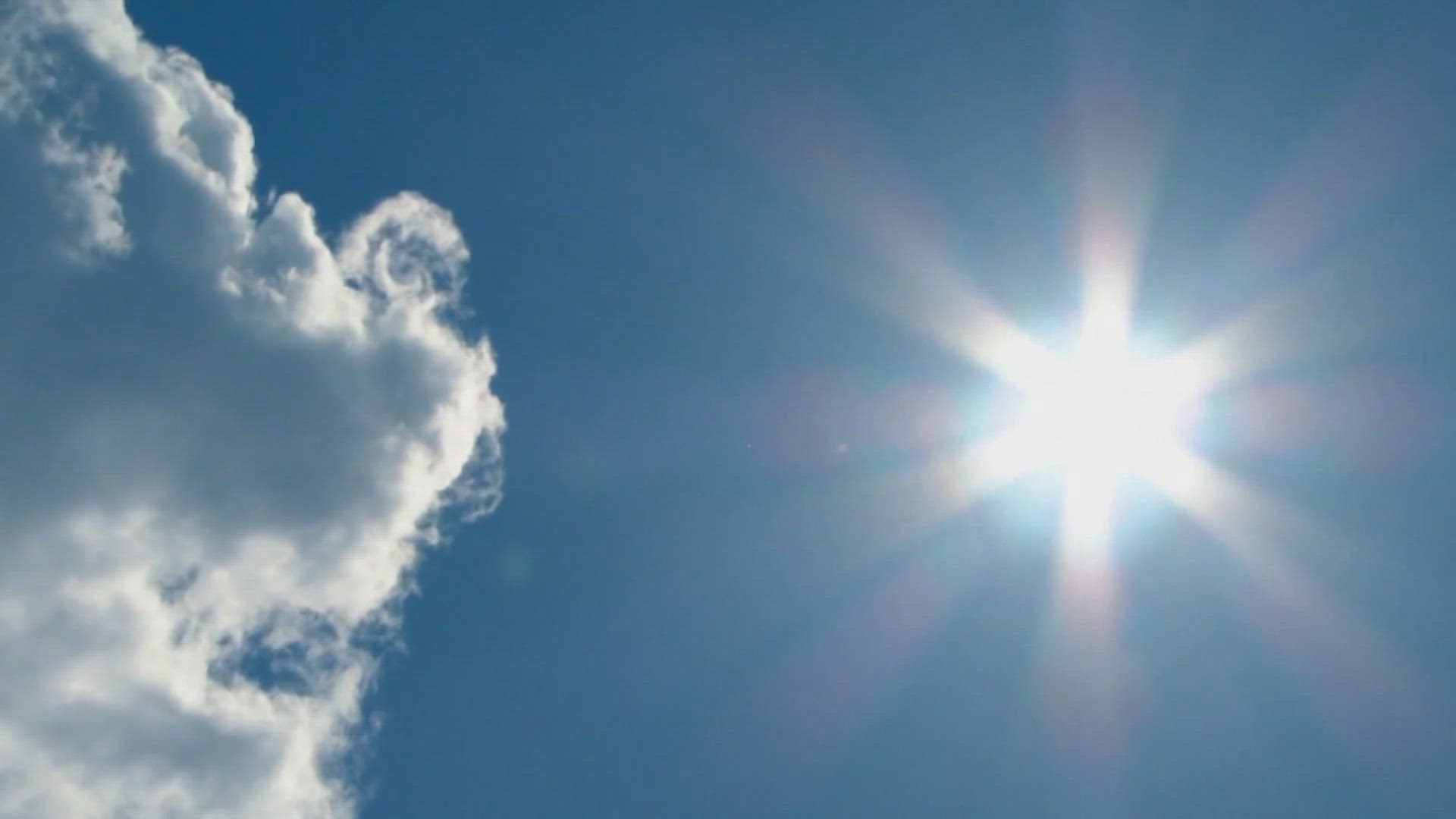LOUISVILLE, Ky. — Thursday, June 20, marks the first day of Summer! This means that it is also the longest day of the year judging solely off the amount of daylight our area receives.
Summer officially begins at 4:51 p.m. Thursday, making Friday the first full day of Summer.


Why do seasons begin and end at a certain time? Simply put, the tilt of the Earth's axis determines if it is summer or winter in the Southern and Northern Hemisphere.
We are located in the Northern Hemisphere, so Summer begins on June 21 and summer ends on Sept. 22 this year.


Sunrise & Sunset Times
During the Summer Solstice, we soak in 14 hours and 49 minutes of daylight in Louisville.
On the shortest day of the year, also known as the Winter Solstice, we will see a meager 9 hours and 30 minutes of daylight on Dec. 21. In conclusion, beginning Friday, the days will be slowly getting shorter and shorter when it comes to daylight.


What is a Solstice?
Solstice is a Latin word meaning "the sun stands." Since the Earth constantly tilts its axis furthest or closest away from the sun, solstice refers to both of those phenomena.
It is opposite in both the Northern and Southern Hemispheres. In summary, the Southern Hemisphere begins Winter Solstice on June 21 and begins Summer Solstice on Dec. 21, while the Northern Hemisphere begins Summer Solstice on June 21 and begins Winter Solstice on Dec. 21 of this year.
Sun Angle
Another key aspect of the longer days and beginning of summer that is often overlooked is the sun angle. The sun angle is simply the angle of the sun with respect to Earth's surface. The higher the sun angle, the more energy from the sun that the Earth picks up. This, in turn, makes for hotter days and more energy to heat the Earth.
Currently, the sun angle is at 75.2 degrees. During the Winter Solstice (Dec. 21) it is at a meager 28.3 degrees. This, in turn, makes for all the difference when it comes to seasons and determining temperatures because of the abundance or lack of energy needed to heat the Earth.


In summary, get out and enjoy the summer months while you can! Soak in the longest days of the year before we begin to pick up shorter and shorter days, along with a lower sun angle. The Fall Equinox is on Sept. 22, meaning that we pick up exactly 12 hours of daylight and the sun is displaying equal amount of daylight on both the Northern and Southern Hemispheres.
Daylight Saving Time also ends the night of Nov. 2, 2024. This means that we will flip our clocks back one our to adjust for the decreasing amount of daylight late this fall.
Make it easy to keep up-to-date with more stories like this. Download the WHAS11 News app now. For Apple or Android users.
Have a news tip? Email assign@whas11.com, visit our Facebook page or Twitter feed.

